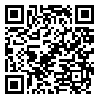Mother and Child Welfare Research Center, Hormozgan University of Medical Sciences, Bandar Abbas, Iran
Abstract: (25 Views)
Introduction: The temperament and character are recognized as key factors shaping educational and research interactions within universities. These traits can significantly impact the quality of learning and teaching. Considering the crucial role of the healthcare field in the health of society, examining the nature and character of medical academics is particularly important. This study aims to determine and compare the temperament and character of faculty members and graduate students in medical fields.
Methods: This descriptive-cross-sectional study involved 207 faculty members and graduate students, utilizing an online questionnaire. Data collection was conducted using Cloninger's Temperament and Character Inventory, with analysis performed using SPSS 21 through descriptive statistics, multivariate analysis of variance, and multiple regression. A significance level of less than 0.05 was considered.
Results: Half of the participants were aged between 31-40 years, with 69.2% being female. The highest and lowest scores in the temperament subscale were novelty seeking (10.99 ± 2.34) and persistence (3.4 ± 1.22), while the highest and lowest scores in the character subscale were cooperation (14.68 ± 2.61) and self-directedness (9.66 ± 4.43). Despite high scores in some subscales, no significant relationship was found between temperament and character in both groups (p > 0.05).
Conclusion: There was no significant difference in temperament and character between faculty members and graduate students in medical and non-medical fields. These findings highlight the uniformity of personality traits across both groups. Therefore, attention to the impact of the educational environment and teaching methods on temperament and character is recommended.
Methods: This descriptive-cross-sectional study involved 207 faculty members and graduate students, utilizing an online questionnaire. Data collection was conducted using Cloninger's Temperament and Character Inventory, with analysis performed using SPSS 21 through descriptive statistics, multivariate analysis of variance, and multiple regression. A significance level of less than 0.05 was considered.
Results: Half of the participants were aged between 31-40 years, with 69.2% being female. The highest and lowest scores in the temperament subscale were novelty seeking (10.99 ± 2.34) and persistence (3.4 ± 1.22), while the highest and lowest scores in the character subscale were cooperation (14.68 ± 2.61) and self-directedness (9.66 ± 4.43). Despite high scores in some subscales, no significant relationship was found between temperament and character in both groups (p > 0.05).
Conclusion: There was no significant difference in temperament and character between faculty members and graduate students in medical and non-medical fields. These findings highlight the uniformity of personality traits across both groups. Therefore, attention to the impact of the educational environment and teaching methods on temperament and character is recommended.
Send email to the article author
| Rights and permissions | |
 |
This work is licensed under a Creative Commons Attribution-NonCommercial 4.0 International License. |







